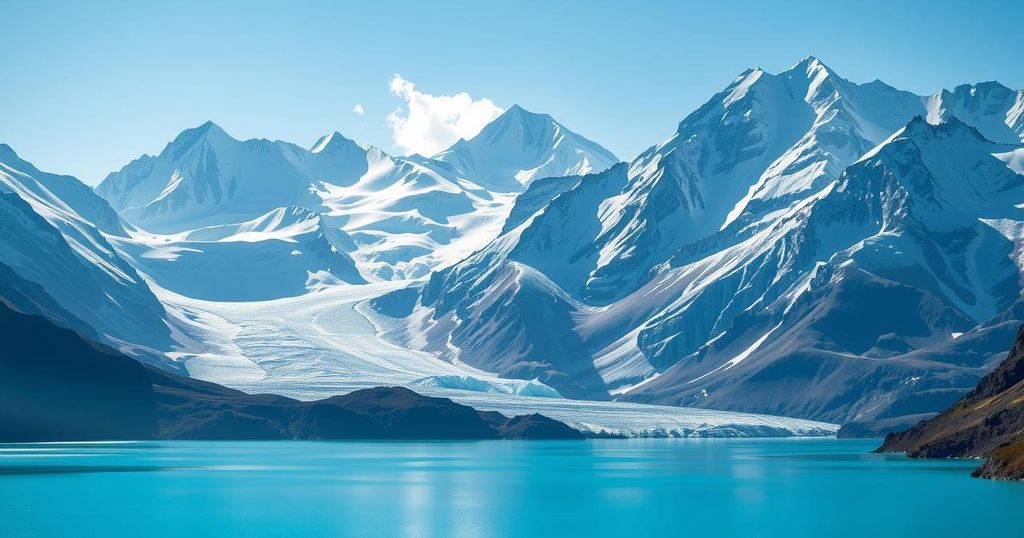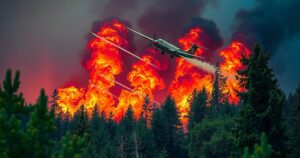Nepal’s Inaugural Sagarmatha Sambaad Focuses on Climate Change and Glacial Resources

The Sagarmatha Sambaad has begun in Kathmandu, focusing on climate change’s impact on Himalayas and stressing the significance of responsible glacier resource management. This summit highlights alarming glacier retreat yet also opens discussions on the socio-economic benefits of these natural assets for irrigation, hydropower, and tourism. Additionally, it addresses the need for improved monitoring and risk management strategies to safeguard communities from glacial lake hazards.
The inaugural Sagarmatha Sambaad, a key dialogue initiative organized by the Nepalese foreign ministry, commenced today in Kathmandu and will take place over three days, focusing on pressing issues of climate change and its implications for the future of humanity, especially in relation to the Himalayas. This summit is viewed by some as a critical opportunity to differentiate revenue-generating activities from the inherent ecological significance of the Himalayan region.
The Himalayas, holding the title of the largest ice reserve outside the polar caps, provide fresh water to over a billion people. However, the glaciers there are experiencing alarming rates of retreat, putting these vital resources at risk. Reports indicate that the mean annual temperature in the Nepalese Himalayas is increasing at roughly 0.06℃ per year — a pace that exceeds the global average. The impact of this phenomenon is multifaceted, tweaking everything from the occurrence of dangerous glacial lakes to the flow of crucial river systems during the monsoon.
Nepal is now grappling with a significant reduction in glacier sizes: a staggering 24% shrinkage in glacier area and a 29% loss in ice reserves have been documented from 1977 to 2010. Notably, though, the number of glaciers has actually increased due to fragmentation. With this constant change, it is alarming that some glaciers, such as Yala in the Langtang region, could completely disappear by 2040 if the current trends persist. This presents a dual challenge: not only does it threaten local ecosystems, but also the water supply for drinking and hydropower, essential for the nation’s energy needs.
A recent study has mapped more than 3,500 glacial lakes across Nepal, and the expansion rate of these lakes is increasing — a direct consequence of glacier shrinkage. Many of these lakes are identified as potentially dangerous, with moraine-dammed glacial lakes holding the highest risk. GLOFs, or glacial lake outburst floods, can cause catastrophic damage, which poses serious threats to communities and infrastructure below them. Vulnerability assessments indicate that in the event of significant GLOFs, damage could extend to thousands of buildings and critical infrastructures, significantly impacting the country’s development.
Despite the looming threats posed by changing climate patterns, Nepal’s glaciers and lakes present untapped socio-economic potential. These resources could provide substantial freshwater options for irrigation and hydropower, essential for fighting water scarcity. Additionally, both Hindu and Buddhist communities view glacial lakes as sacred, promoting pilgrimage and tourism that can enhance local economies. With a tourism sector that could involve winter sports, there is much to gain if managed correctly.
The Sagarmatha Sambaad could serve as a platform to push for improved evaluation and management strategies for Nepal’s cryospheric resources. By integrating advanced monitoring technologies and creating a comprehensive database of glacier dynamics and related hazards, the potential for protective measures expands. Implementing timely early warning systems and engineering solutions can help safeguard both local communities and the broader environment.
In conclusion, the Sagarmatha Sambaad represents a critical opportunity. By emphasizing climate justice and sustainable practices, Nepal can leverage its glaciers and glacial lakes as vital, renewable resources that not only support ecological health but also foster economic growth. This summit could very well be a turning point toward establishing a resilient future for the often-overlooked mountain communities dependent on these vital glacial resources.
In summary, the Sagarmatha Sambaad in Kathmandu presents an urgent opportunity to address climate change issues pertinent to the Himalayas. It highlights the significant implications of retreating glaciers on both local communities and the environment. While there are serious risks to be managed, the summit also shines a light on potential economic benefits from responsibly utilizing these natural resources. Adjustments to monitoring strategies, engineering solutions, and prioritizing international collaboration could foster resilience and socio-economic growth in Nepal’s mountain regions affected by glacial changes.
Original Source: myrepublica.nagariknetwork.com







